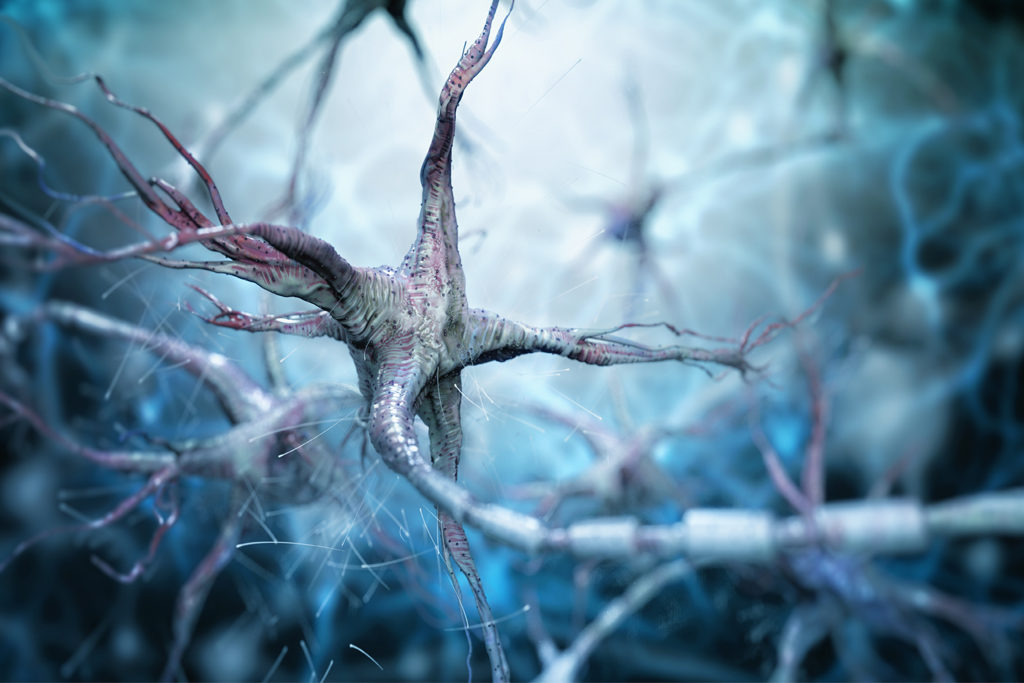A Quick Run Down of Your Peripheral Nerves

One of the first steps toward understanding a peripheral neuropathy diagnosis is to understand peripheral nerves.
Your nerves, as it turns out, are so much more than just your nerves. As with many parts of the human body, your nerves are made up of many other, smaller components. Each one contributes to a whole that is greater than the sum of all its parts — which is a principle that you see at work in the human body, over and over again. Cells combine to form organs. Organs combine to form systems. And it all comes together to form the incredible human body.
“Complicated” isn’t an overstatement, either. Your nervous system is one of the most complex parts of what is already a very complex system — it’s a latticework of electrical impulses and their conductors, and it’s very literally in control of every single thing that your body does and experiences.
Even just a single nerve fiber isn’t one nerve fiber. Each nerve fiber running through your body is made up of many bundles of even smaller fibers…and these themselves are also made up of smaller, bundled fibers
The Types and Kinds of Nerves
Being that your nerves are responsible for a wide variety of different functions, it follows that there are a few different types. Each different type of nerve is specialized to conduct a certain type of signal throughout the body, and together they make sure that everything is working as it should.
In general, your nerves are in charge of three different types of functions.
- motor nerves are in charge of motion and movement
- sensory nerves regulate sensory information, like sight, smell, and sensation
- autonomic nerves relay breathing, heart rate, blood pressure, and so forth
When we talk about your nerves, we’re really talking about a variety of different smaller parts, and your symptoms relate to those parts. A big part of the reason that peripheral neuropathy can be so difficult to deal with is that its symptoms are widely varied.
This is because peripheral neuropathy takes different forms, depending upon which specific part of the nerve it’s impacting.
The Soma and the Axon
Your nerves are like little electrical wires that run through your entire body — and they all have to start somewhere. The origin point for these nerve endings is what we call the soma, or the central nerve body. These parts of the nerve tend to live close to the brain and the spine. So when we talk about peripheral neuropathy, we’re not actually talking about the central nerve body.
Rather, peripheral neuropathy specifically applies to a part of the nerve known as the axon. This is a long, arm-like extension that the nerve soma sends out, and it reaches all the way to whatever part of the body the nerve is in charge of controlling.
The axon is usually the part of the nerve that degenerates when peripheral neuropathy sets in, as they’re the parts of the nerve that extend out to the farthest ends of your body (or the periphery). The farther away a nerve ending gets from its central nerve body, the harder it is for that nerve body to reach it with compounds that repair it and keep it healthy.
Axons bundle themselves together to form fascicles, and these fascicles in turn bundle together to form the actual nerve fibers that can be seen without a microscope.
So, in reality, a single nerve fiber is made up of many, many axons, bundled together to form a series of fascicles…which then bundle themselves together to form the actual nerve fibers.
Large Fibers and Small Fibers
Larger nerve fibers and smaller ones serve different functions in the body — even though both types of fibers tend to be made up of a combination of all three types of nerves.
Typically, larger nerve fibers are responsible for transmitting heavier informational loads. They also tend to be covered with myelin sheath. This is a coating made up of fats and proteins, and it not only protects the nerve from damage but helps to encourage faster conductivity.
Smaller nerve fibers usually go without this myelin sheath and also tend to be in charge of transmitting a bit less information than their more heavy-duty counterparts. They also react to damage in very different ways, which leads to the various types of neuropathy that one might encounter, once damage starts to set in.

